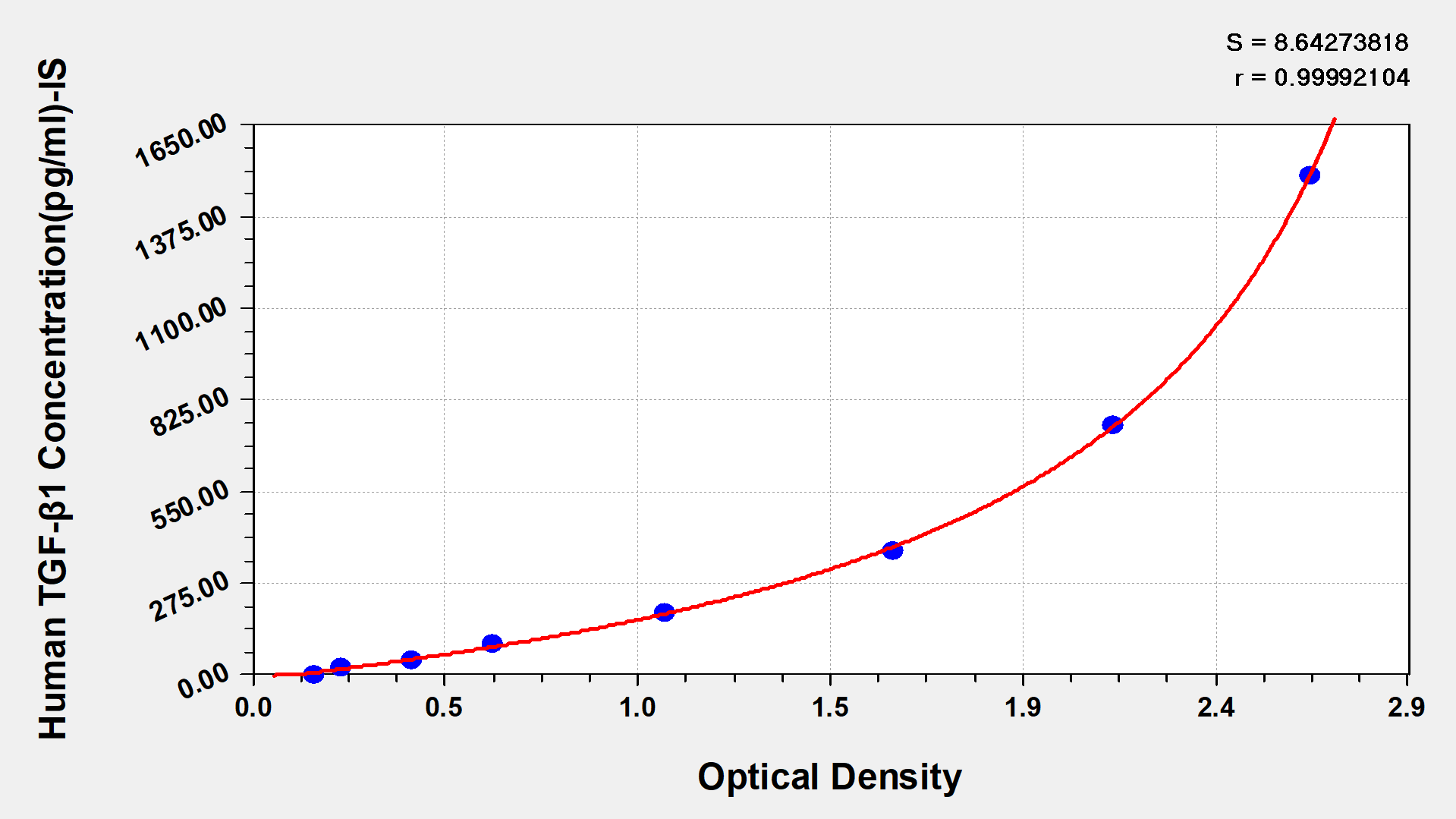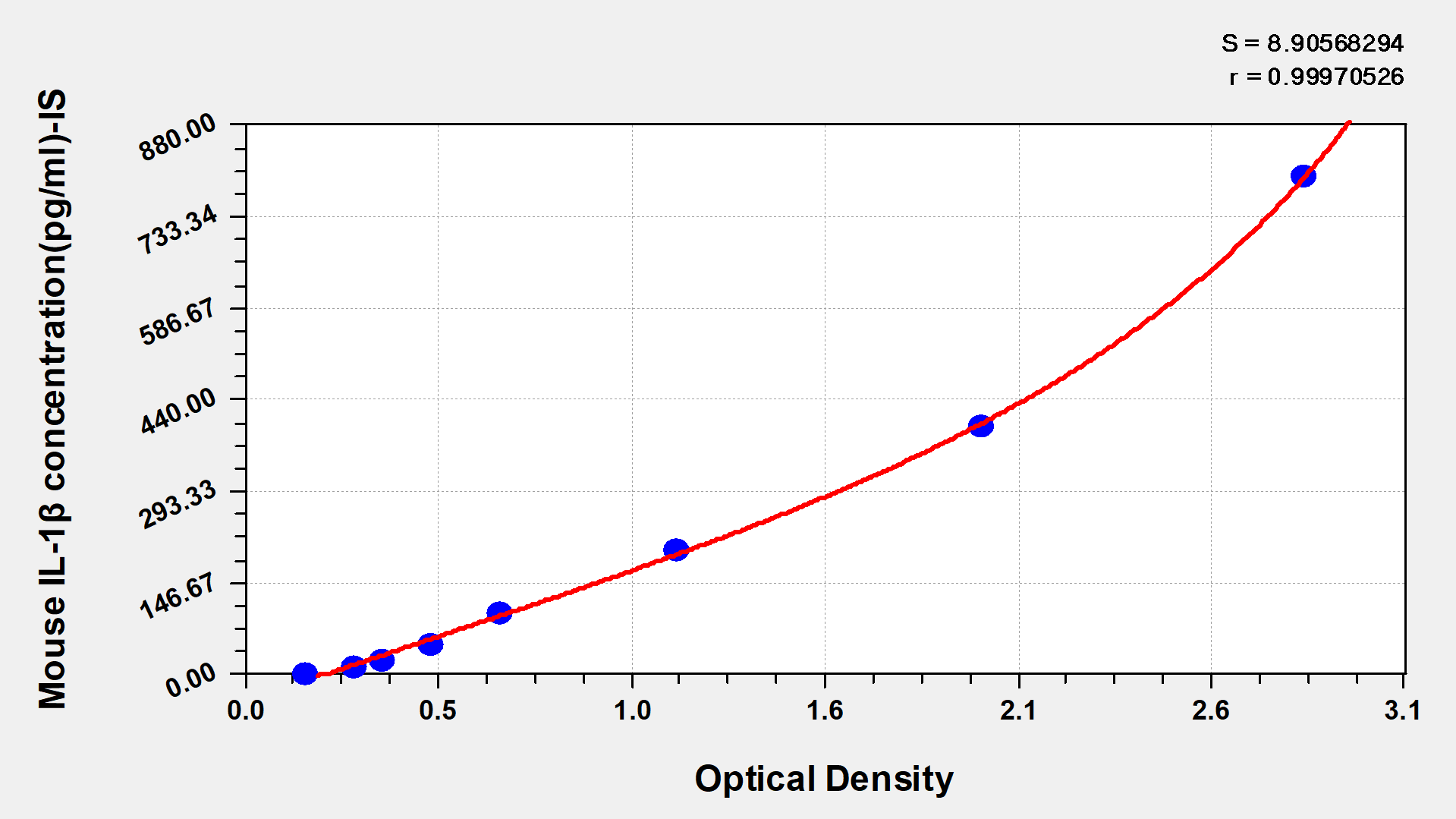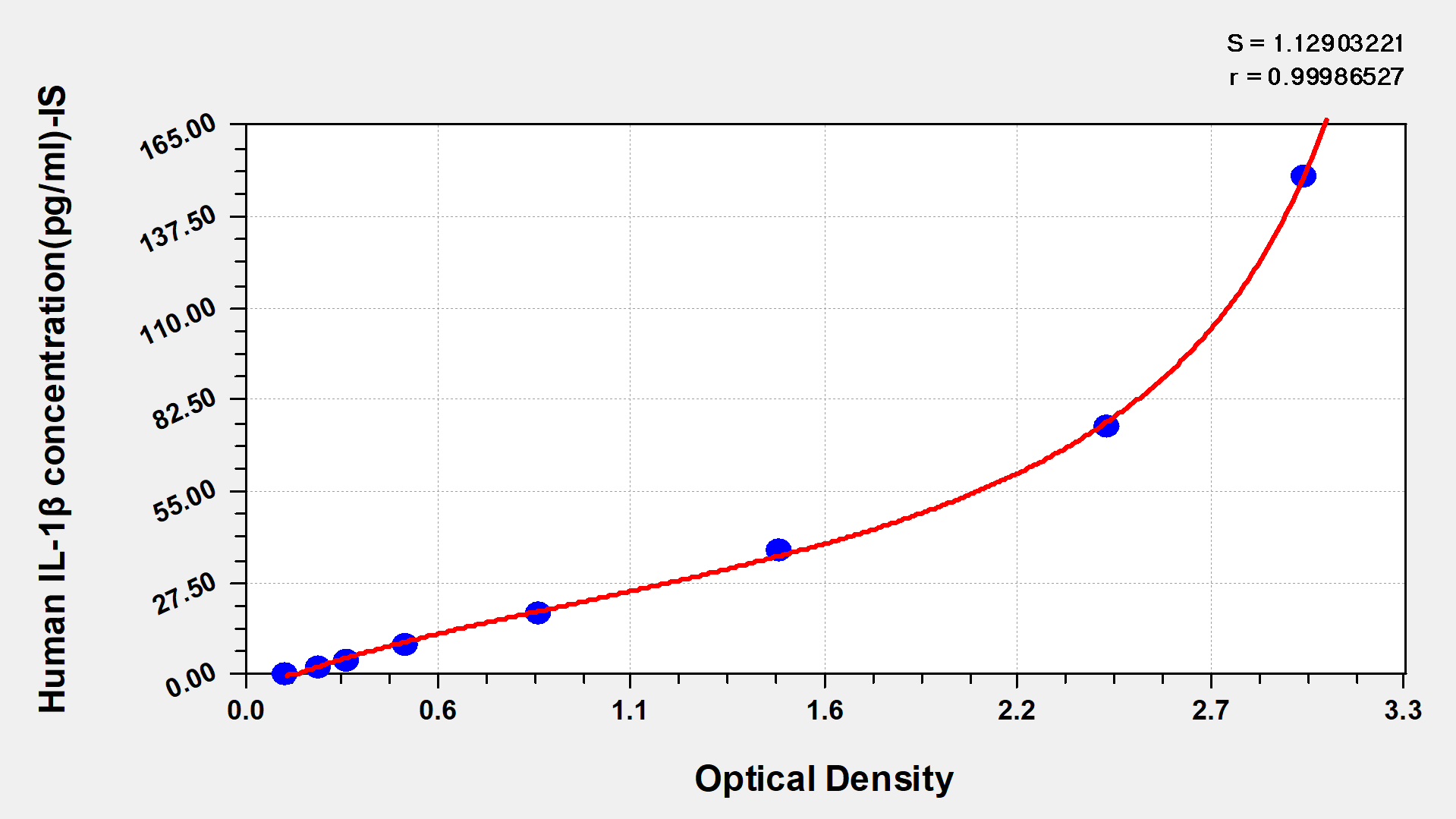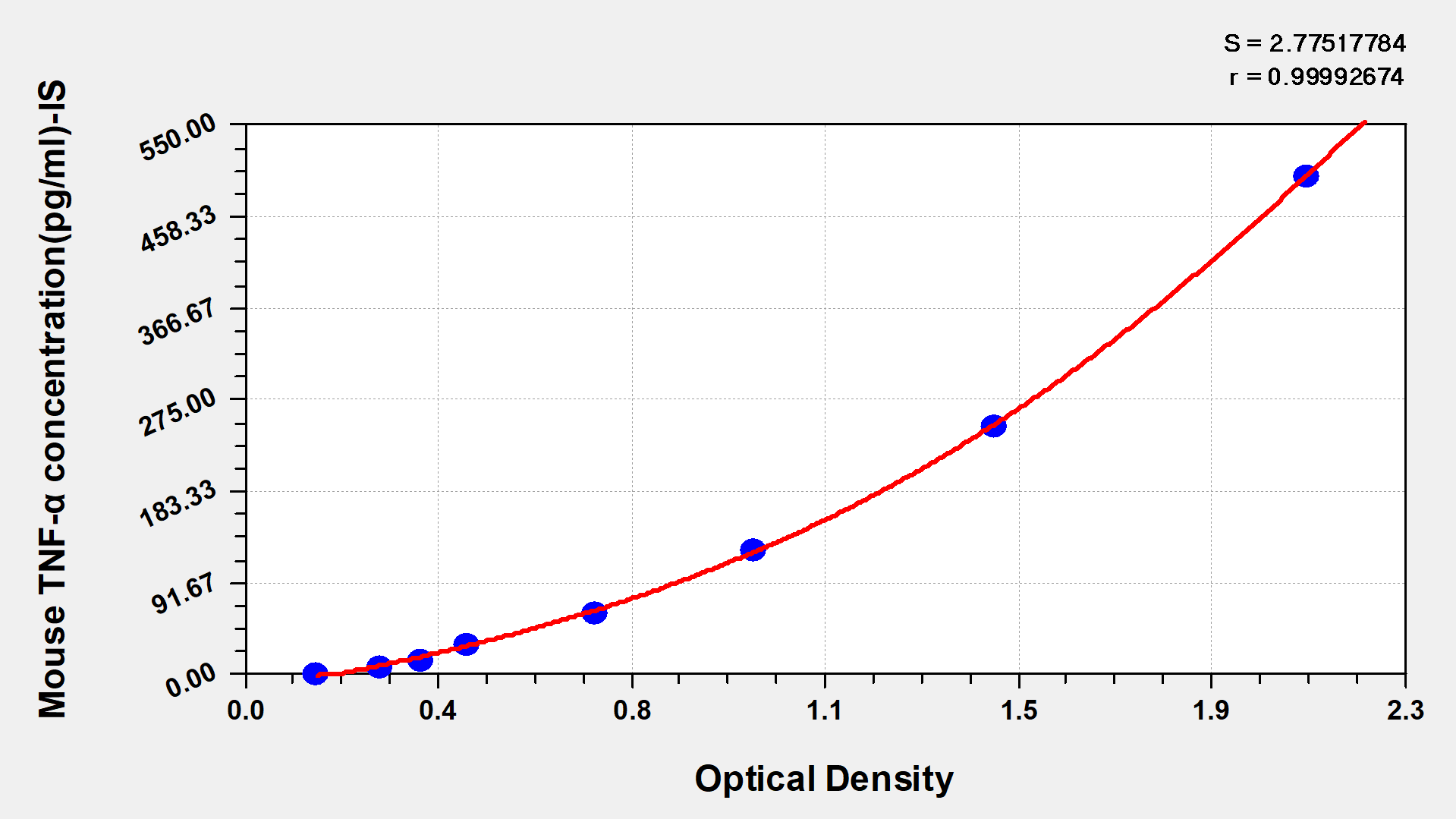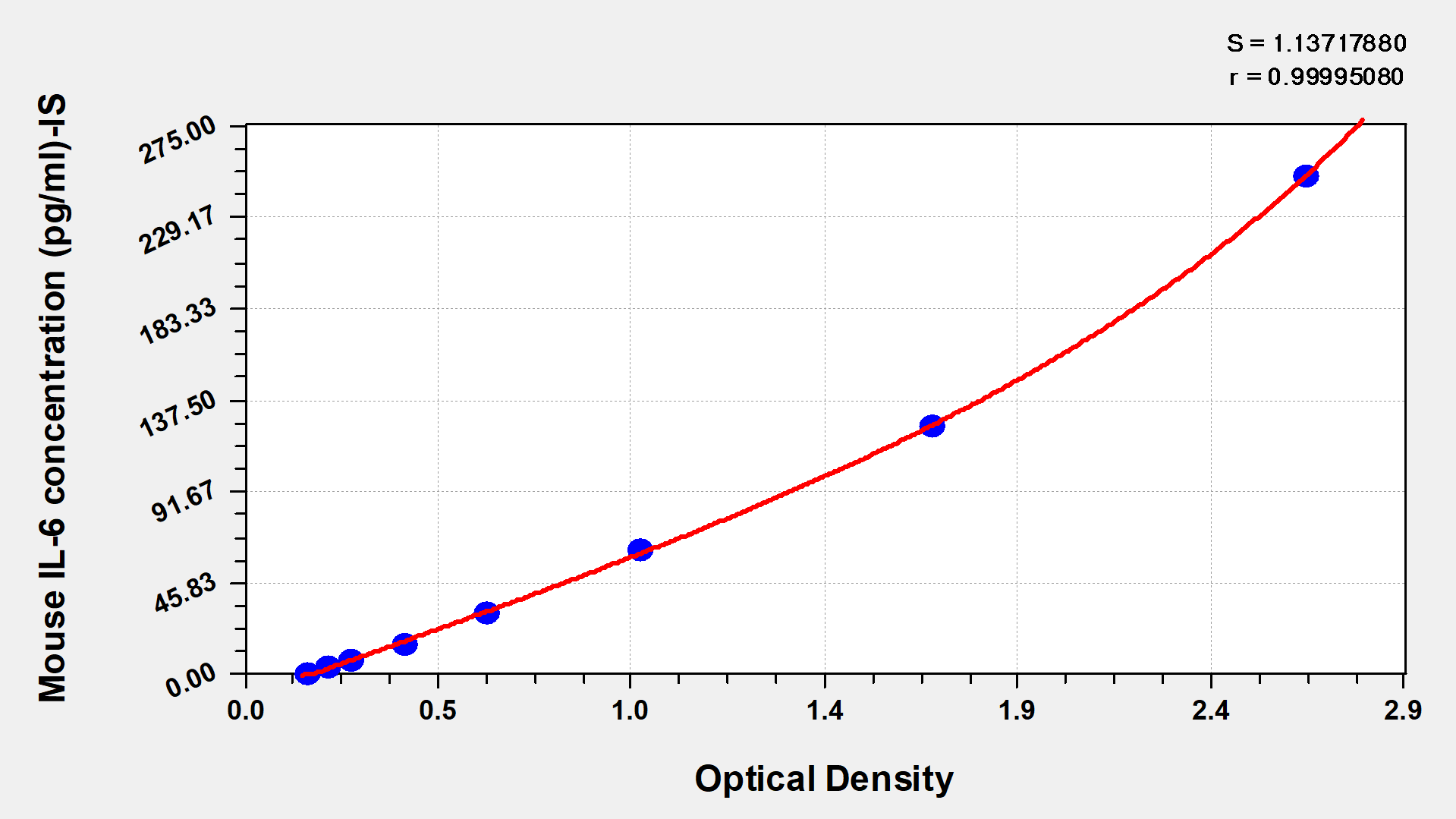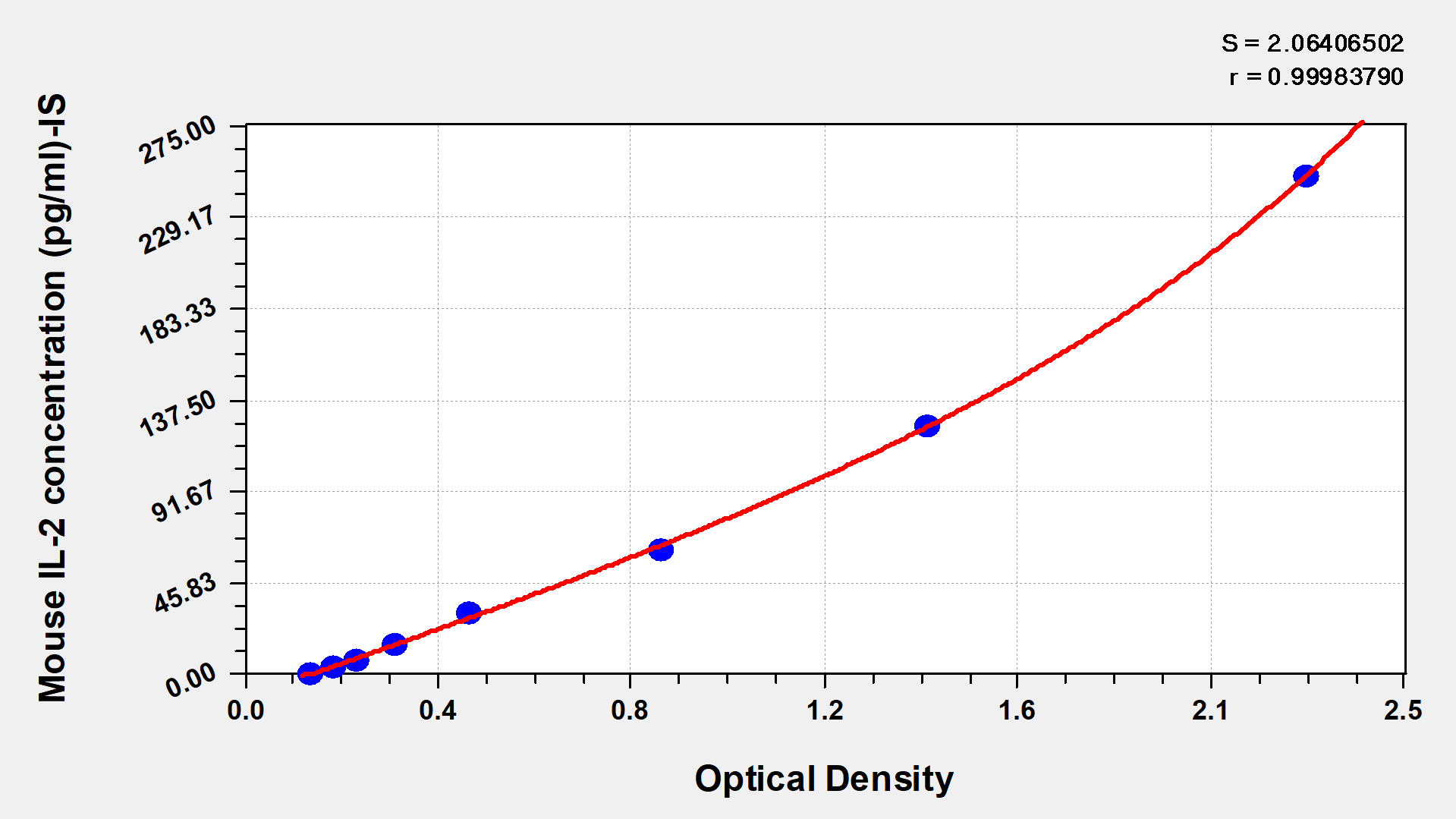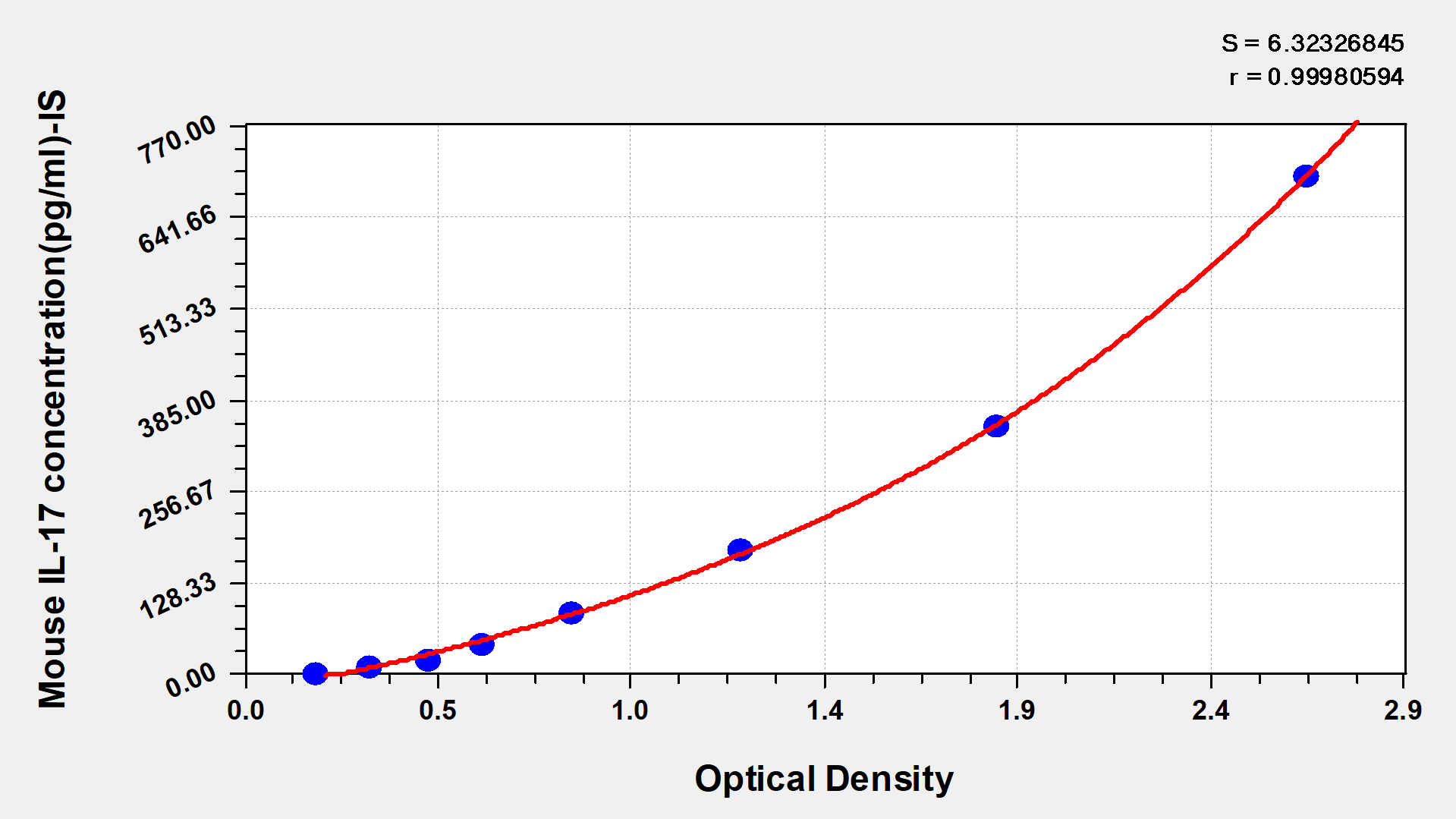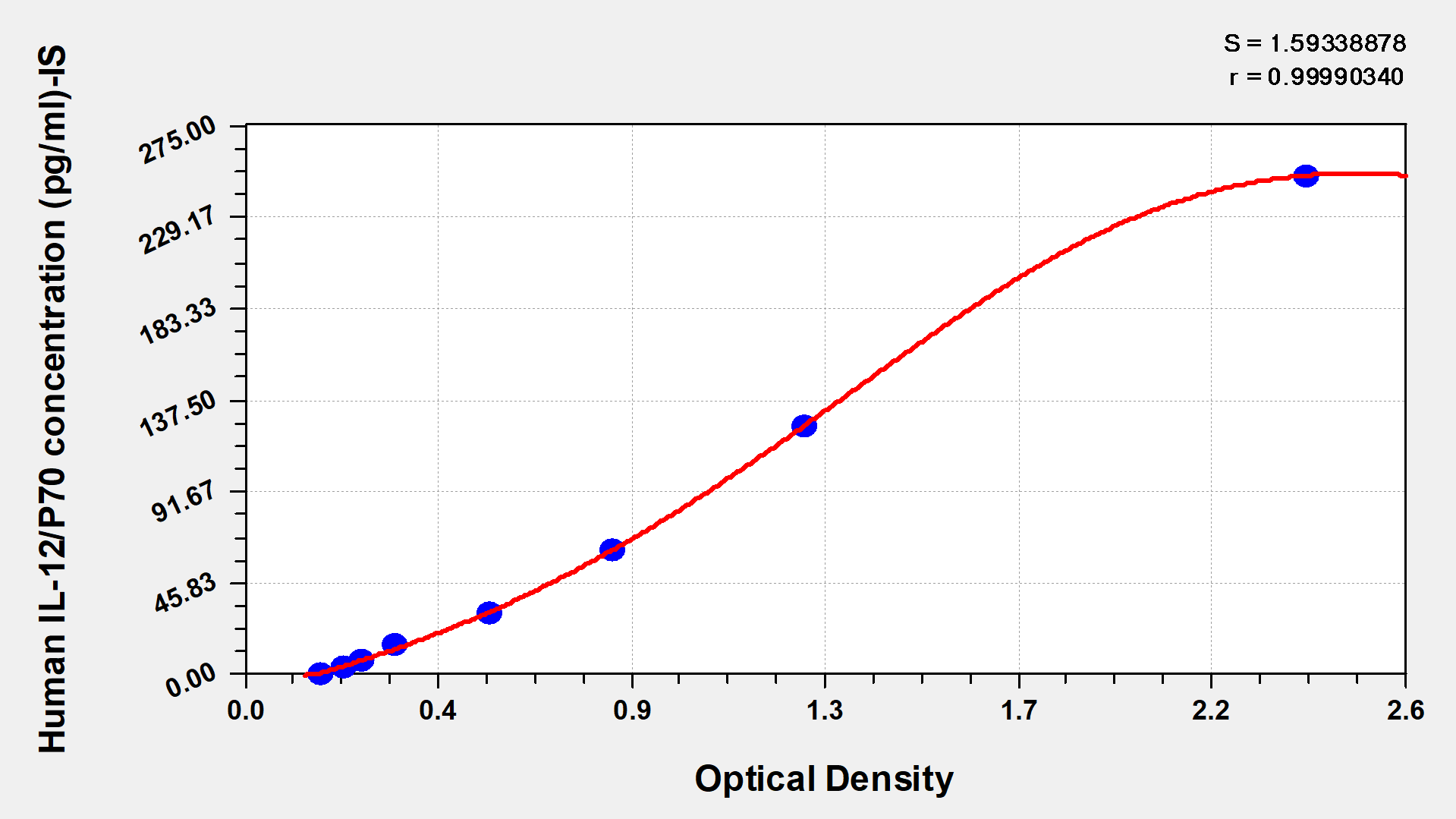-
中文名称:小鼠CXC趋化因子13(Cxcl13/Blc/Scyb13)酶联免疫试剂盒
-
货号:CSB-E16832m
-
规格:96T/48T
-
价格:¥3600/¥2500
-
其他:
产品详情
-
产品描述:CUSABIO小鼠CXC趋化因子13(Cxcl13/Blc/Scyb13)酶联免疫检测试剂盒(货号:CSB-E16832m),基于双抗体夹心法原理实现定量分析,可精准检测血清、血浆、组织匀浆及细胞培养上清液等样本中Cxcl13的浓度。Cxcl13作为CXC趋化因子家族成员,在B淋巴细胞归巢、淋巴组织形成及自身免疫性疾病中发挥关键调控作用,是研究免疫微环境的重要分子标记物。本试剂盒检测灵敏度覆盖0.156 ng/mL至10 ng/mL线性范围,采用预包被高特异性抗体与酶标检测抗体协同作用,确保实验结果的稳定性和重复性。适用于基础科研中探究感染性疾病、肿瘤免疫或自身免疫性疾病模型(如类风湿性关节炎、系统性红斑狼疮)的分子机制,亦可用于评估药物干预或基因修饰对Cxcl13表达水平的影响。实验操作兼容常规酶标仪分析,配套标准品及生物素化检测体系可满足多样本批量检测需求,为免疫调控研究及生物标志物筛选提供可靠工具。
-
别名:Cxcl13 ELISA kit; Blc ELISA kit; Scyb13C-X-C motif chemokine 13 ELISA kit; B lymphocyte chemoattractant ELISA kit; CXC chemokine BLC ELISA kit; Small-inducible cytokine B13 ELISA kit
-
缩写:
-
Uniprot No.:
-
种属:Mus musculus (Mouse)
-
样本类型:serum, plasma, tissue homogenates, cell culture supernates
-
检测范围:0.156 ng/mL-10 ng/mL
-
灵敏度:0.096 ng/mL
-
反应时间:1-5h
-
样本体积:50-100ul
-
检测波长:450 nm
-
研究领域:Immunology
-
测定原理:quantitative
-
测定方法:Sandwich
-
精密度:
Intra-assay Precision (Precision within an assay): CV%<8%
Three samples of known concentration were tested twenty times on one plate to assess.Inter-assay Precision (Precision between assays): CV%<10%Three samples of known concentration were tested in twenty assays to assess.
-
线性度:
To assess the linearity of the assay, samples were spiked with high concentrations of mouse Cxcl13/Blc/Scyb13 in various matrices and diluted with the Sample Diluent to produce samples with values within the dynamic range of the assay.
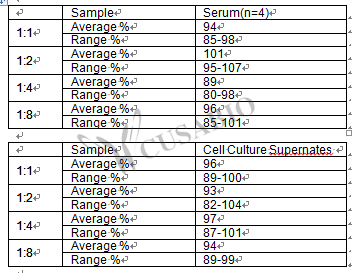
-
标准曲线:
These standard curves are provided for demonstration only. A standard curve should be generated for each set of samples assayed.
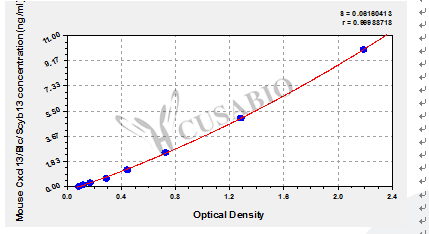
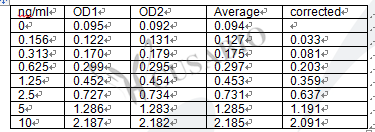
-
数据处理:
-
货期:3-5 working days
引用文献
- Reciprocal regulation of SIRT1 and AMPK by Ginsenoside compound K impedes the conversion from plasma cells to mitigate for podocyte injury in MRL/lpr mice in a B cell-specific manner Z Song,Journal of ginseng research,2024
- Abnormal expression of CXCL13, MIF and IL-35 in patients with primary Sjögren's syndrome and its relationship with disease severity R Wang,Central European Journal of Immunology,2023
- Immunogenic necroptosis in the anti-tumor photodynamic action of BAM-SiPc, a silicon(IV) phthalocyanine-based photosensitizer Y Zhang,Cancer Immunology, Immunotherapy,2020
产品评价
样品类型:组织匀浆液 肿瘤匀浆
样品信息:小鼠
稀释比:其他 1:10
产品评价: 我们用CSB-E16832m检测患病小鼠肿瘤匀浆中的CXCL13,样本OD值为0.3-0.5
By 刘老师
相关产品
靶点详情
-
最新研究进展:CXCL13也被称为B淋巴细胞趋化素(BLC),是一种趋化因子蛋白,能够在体内引起B细胞的化学趋化。最新的研究表明,CXCL13在免疫反应和疾病发展中起着重要作用。例如,CXCL13在淋巴组织结构形成、自身免疫疾病、肿瘤和传染病等方面都有影响。此外,CXCL13也被证明是COVID-19患者中的一个重要因子,其浓度可以用于评估COVID-19的严重程度和预后。
-
功能:Strongly chemotactic for B-lymphocytes, weakly for spleen monocytes and macrophages but no chemotactic activity for granulocytes. Binds to BLR1/CXCR5. May play a role in directing the migration of B-lymphocytes to follicles in secondary lymphoid organs.
-
基因功能参考文献:
- CXCL13, upregulated by peripheral inflammation, acts on CXCR5 on dorsal root ganglia neurons and activates p38, which increases Nav1.8 current density and further contributes to the maintenance of inflammatory pain. PMID: 27708397
- This study indicated that CXCL13 may be pathogenically involved in Clostridium difficile infection (CDI) and served as a potential new biomarker for diagnosis and prognosis in CDI. PMID: 27685937
- CXCL13 has a role in directing B-lymphocyte migration PMID: 27477203
- CXCL13 and CXCR5 contribute to orofacial pain via ERK-mediated proinflammatory cytokines production. PMID: 27401148
- High glucose could inhibit osteogenic differentiation of mesenchymal stem cells by lncRNA AK028326 mediated down-regulation of CXCL13 expression. PMID: 27693963
- Data demonstrate that CXCL13 is not essential in mounting effective peripheral humoral responses, but specifically promotes CNS accumulation of differentiated B cells. PMID: 26795429
- overexpression of CXCL13 is associated with myasthenia gravis. PMID: 26771137
- Deficiency in Cxcl13 or its receptor, Cxcr5, significantly attenuated benzo(a)pyrene-induced lung cancer in mice, demonstrating CXCL13's critical role in polycyclic aromatic hydrocarbon-induced lung carcinogenesis. PMID: 26565418
- Blockade of CXCL13 significantly reduced urine protein, serum creatinine, and dramatically attenuated renal pathology injury in lupus nephritis in mice. PMID: 26456520
- Results from this study suggest blockade of CXCL13 and BAFFR together may be an effective therapeutic strategy in preventing salivary hypofunction and reducing autoantibody titers and sialadenitis in patients with Sjogren's syndrome PMID: 26826598
- findings reveal a neuronal/astrocytic interaction in the spinal cord by which neuronally produced CXCL13 activates astrocytes via CXCR5 to facilitate neuropathic pain. PMID: 26752644
- Study reports a novel role of AK141205/CXCL13 as a regulator of osteogenic growth peptide-induced osteogenic differentiation of smooth muscle cells. PMID: 26321662
- Data indicate that CXC chemokine CXCL13-responsive late transitional B cells are the initiating subset for the positive feedback loop. PMID: 25662995
- Study demonstrates that microglia are an important source of CXCL13 production in the acutely inflamed brain, and in vitro experiments confirm that type-I IFN selectively inhibits microglial production of CXCL13 in a dose-dependent manner PMID: 24829092
- Data suggest that Src homology 3 (SH3) protein interacting with NcK, 90 kDa (SPIN90)plays an important role in B cell immune responses through the regulation of chemokine CXCL13-mediated B cell migration. PMID: 24965518
- mediates vaccine-induced immunity against tuberculosis PMID: 23299616
- CXCL13 may be pathogenically involved in SS and may serve as a new marker and a potential therapeutic target. PMID: 23904442
- CXCL13 is produced within lymphoid follicles of patients with COPD and is crucial for the formation of TLOs. PMID: 23742729
- Late stage cathepsin C, CXCL13 and Ki-67 overexpression correlate with regional neuropathology in a bovine spongiform encephalopathy transgenic murine model. PMID: 22789860
- Interruption of CXCL13-CXCR5 axis increases upper genital tract pathology and activation of NKT cells following chlamydial genital infection. PMID: 23189125
- Data show that CXCL13/CXCR5 facilitated antigen encounter and BCR signaling by promoting membrane ruffling and LFA-1-supported adhesion require a functional actin cytoskeleton and the activity of the motor protein non-muscle myosin II (NM-II). PMID: 21659539
- LTBR-pathway in Sjogren's syndrome: CXCL13 levels and B-cell-enriched ectopic lymphoid aggregates in NOD mouse lacrimal glands are dependent on LTBR. PMID: 21153342
- found enhanced plasma levels of CXCL13 in lupus-prone MRL/lpr and NZB/W-F1 mice PMID: 21084753
- Dendritic cells produce CXCL13 and participate in the development of murine small intestine lymphoid tissues PMID: 20304952
- Disease-associated B lymphocyte selection into islets occurs despite CXCL13 blockade- induced disruption of their structural organization; loss of B cell organization in islets do not provide disease protection. PMID: 20574003
- elevated expression and different distribution in the aged spleen PMID: 19845796
- New putative control elements in the promoter OF CXCL13 chemokine gene, a target of alternative NF-kappaB pathway PMID: 19807029
- CXCL13 is essential for the spatial arrangement of lymphocytes within granulomas, optimal activation of phagocytes, and subsequent control of mycobacterial growth. PMID: 19933855
- A subset of dendritic cells expressing CXCR5 migrate rapidly into the primary lymphoid follicles from the marginal zone in response to CXC ligand 13 (B lymphocyte chemoattractant, CXCL13) via a B cell-derived, membrane lymphotoxin-dependent mechanism. PMID: 11994465
- CXCR5/CXCL13 signaling activates alpha4beta1 integrin on CD4+CD3- cells. PMID: 12354388
- its aberrant high expression is a cause of SLE--review PMID: 12518463
- CXCL13 expressed in the high endothelial venule lumen plays a crucial role in B cell trafficking into secondary lymphoid tissues such as Peyer's patches. PMID: 12902460
- The tissue architecture of the lymphoid clusters induced in the chronic lesion of autoimmune gastritis is supported by a typical lymphoid reticular network and follicular dendritic cells expressing the B cell homing chemokine, CXC chemokine ligand 13. PMID: 14530361
- This experiment find that gene expression of CXCL13, a chemokine involved in B-cell recruitment into lymphoid follicles.the presence of lymphoid follicle-like structures containing B cells. PMID: 14975582
- data identify CXCL13 as an arrest chemokine for B cells in high endothelial venules and that CXCL13 plays an important role in B-cell entry into not only Peyer patches but also mesenteric lymph nodes PMID: 15972452
- B-cell defects in the nasal-associated lymphoid tissue of lymphotoxin(-/-) mice can be attributed to the impaired expression of CXCL13. PMID: 16210592
- double-negative (DN) Treg cells preferentially express Burkitt lymphoma receptor 1, and interaction of this chemokine receptor with its ligand CXCL13 plays an important role in DN Treg cell migration both in vitro and in vivo PMID: 16621993
- CXCL13 plays a pathogenic role in experimental autoimmune encephalomyelitis, particularly during the effector phase. PMID: 16751415
- ability of CXCL13 and sphingosine1-phosphate to direct the trafficking and localization of B cells in vivo may be dependent on Rap activation PMID: 16821235
- Pulmonary expression of Cxcl13 is essential for local immunity to influenza. PMID: 17563386
- study shows CCL21 & CXCL13 are transiently down-regulated in lymphoid tissues during immune responses by a mechanism controlled by interferon-gamma; the modulation altered localization of lymphocytes & dendritic cells within responding lymphoid tissues PMID: 17673664
- Survival after UVA irradiation was greater in human keratinocytes compared to mouse skin with no S100A2 expression, showing a protective role for S100A2. A S100A2-dependent difference was observed in the induction of Cxcl13 transcripts in transgenic mice. PMID: 18773213
- The activation of both canonical and non-canonical nuclear factor-kappaB (NF-kappaB) pathways was essential for CXCL13 induction. PMID: 19251935
- Unlike conventional lymphoid organs, milky spots in the omentum developed in the absence of lymphoid tissue-inducer cells, but required the chemokine CXCL13 PMID: 19427241
- RA induces CXCL13 expression and is essential for lymph node formation. PMID: 19783990
显示更多
收起更多
-
亚细胞定位:Secreted.
-
蛋白家族:Intercrine alpha (chemokine CxC) family
-
组织特异性:Found in spleen (B-cell-rich zone or follicles), Peyer patches (strongest within germinal centers and extending to the mantle zone) and lymph nodes (in reticular pattern in follicles).
-
数据库链接:
Most popular with customers
-
Human Transforming Growth factor β1,TGF-β1 ELISA kit
Detect Range: 23.5 pg/ml-1500 pg/ml
Sensitivity: 5.8 pg/ml
-
-
-
Mouse Tumor necrosis factor α,TNF-α ELISA Kit
Detect Range: 7.8 pg/ml-500 pg/ml
Sensitivity: 1.95 pg/ml
-
-
-
-




